Feeling the pulse of the heartland
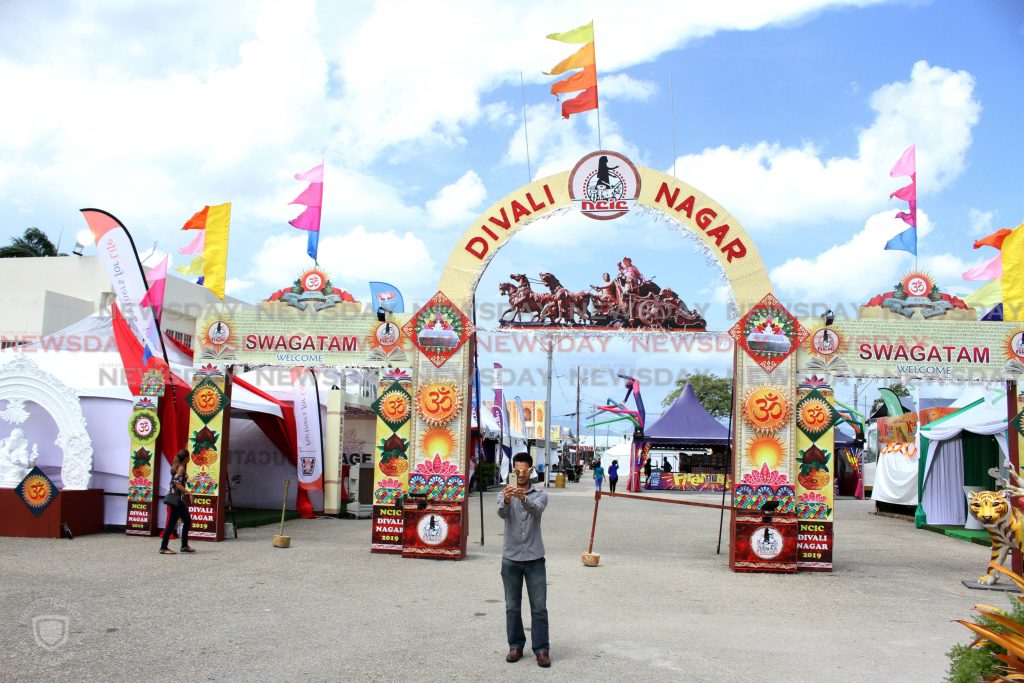
Cruising the Uriah Butler Highway on the Friday morning before Divali, there was a steady flow of traffic. The highway and surrounding roadways are the veins bringing life to Trinidad’s central region. Scattered along these vessels are pulses of activities which keeps the nation’s heartland beating.
On tour of the heartland with the National Trust, I was on my way to experience those activities firsthand but first I drove past the plains of Caroni. Visible was a slightly disproportionate balance between development and nature as the tour bus approached the turnoff into Carapichaima.
There was a noticeable change with the turnoff. The loud sounds of the highway’s buzz faded into a gentler hum fueled by the activities in Carapichaima. We drove along Orange Field Road to the tour’s first stop at the Sri Dattatreya Yoga Centre.
The hum of the area’s activities gradually halted and was replaced by the soft chants of humble devotees as we left the maxi and approached the centre’s entrance. The devotees were worshipping at the base of an 85-foot-tall Lord Hanuman Murti towering gracefully over the compound.
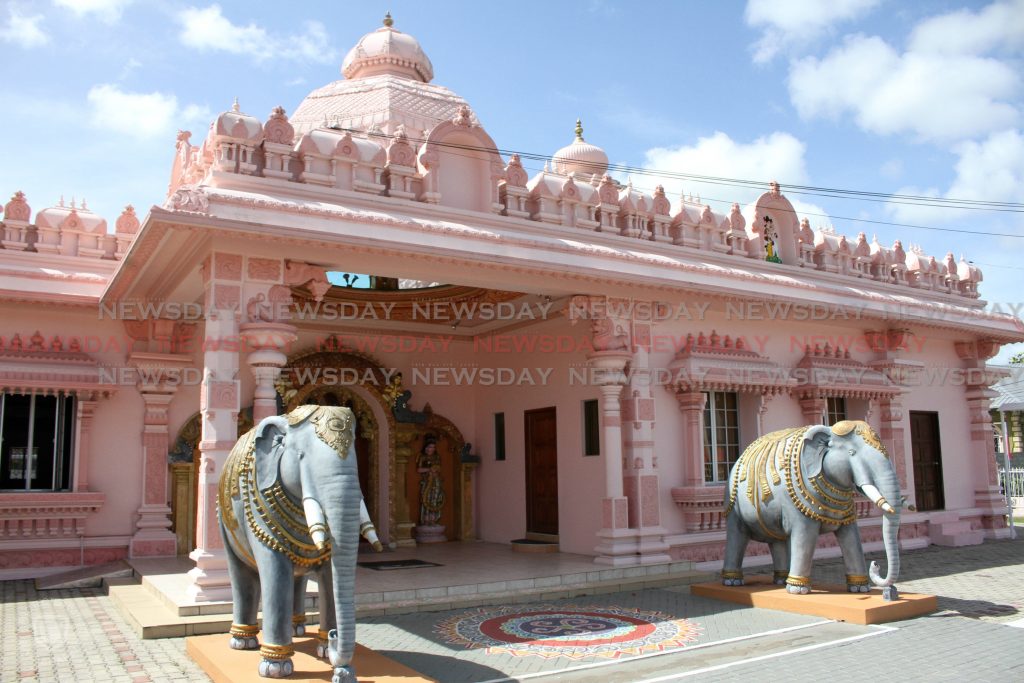 One of the largest outside mainland India, the Murti complimented the beauty of the main buildings on the compound. Painted in a warm pink hue, the buildings were adorned with handcrafted artwork and statues conveying scenes from a collection of sacred Hindu texts.
One of the largest outside mainland India, the Murti complimented the beauty of the main buildings on the compound. Painted in a warm pink hue, the buildings were adorned with handcrafted artwork and statues conveying scenes from a collection of sacred Hindu texts.
Approaching a devotee who wished to only be identified as Krishna, he shared that his time was not only devoted to worship but was also spent welcoming the site’s visitors, each morning. Matching the site’s relaxed atmosphere, he used a mellow tone to describe the centre as a space belonging to everyone regardless of religion or belief.
Saying that the site’s experience is one that can be shared by people of all backgrounds to escape the world’s busyness, Krishna welcomes people to pray, meditate and reflect in whatever way they choose when visiting. To Krishna we all share a common destination and our differences are simply expressions of the various paths we choose to get to that destination.
I got lost in the conversation and forgot there were more sights and sounds to experience, but before I was done, I just had to get more insight into the towering Murti. Krishna explained the Murti was handcrafted by sculptors from Southern India and Lord Hanuman represents a spiritual guru with qualities of strength, knowledge a humility. That explained why I felt humbled as the divine being towered over me while keeping a watchful eye. It was my first time visiting and I encourage people to visit at least once for the enlightening experience.
 I wished I could have stayed just a bit longer but the tour continued just a stone’s throw away at the Indian Caribbean Museum where I was due for more adventure, enlightenment and knowledge.
I wished I could have stayed just a bit longer but the tour continued just a stone’s throw away at the Indian Caribbean Museum where I was due for more adventure, enlightenment and knowledge.
Featuring the art of local pioneer Dr Isaiah James, the museum offered a peek into the lives of indentured Indian labourers through carefully curated artifacts. One of the museum’s curators Kamini Koongebeharry briefly transported me to life on the Fatel Razack – the first ship to bring indentured Indian labourers to Trinidad – as she shared stories with the help of a large replica of the boat which eventually shaped the country’s history.
I was then directed to enter a mud/clay hut constructed in 2018. The hut was a realistic replication of the homes of indentured labourers. Also called a Jhoparee in Bhojpuri language, it captured the labourers' living conditions and their daily tools. At the hut’s entrance, a pair of Jharkhand Adhivasi statues caught my eyes as they were dressed in the beautiful traditional attire of India’s Jharkhand region.
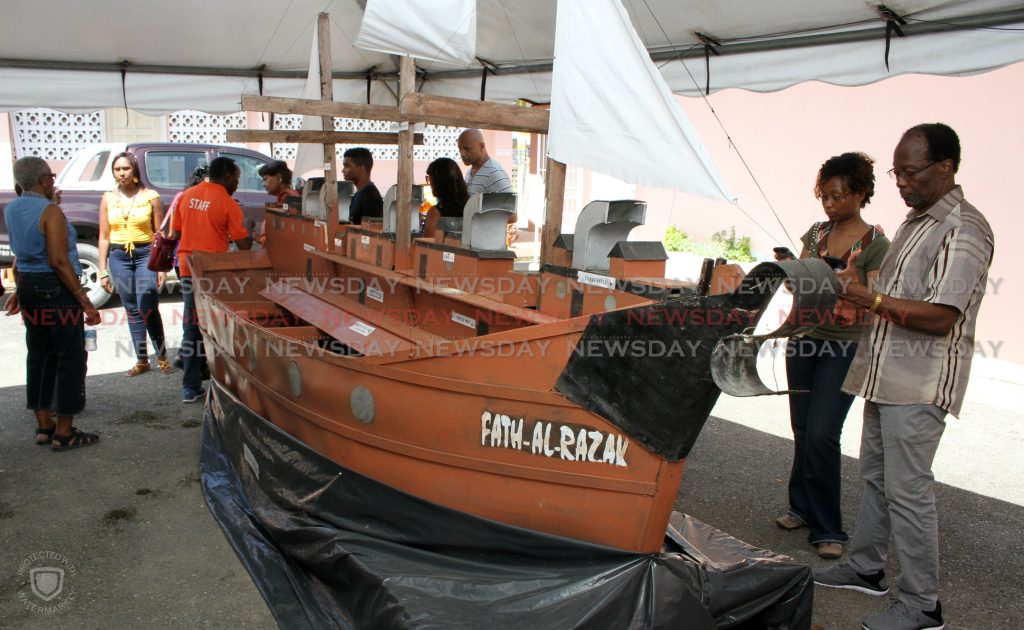
Impressed, I wondered about the possibility of the museum being more interesting and, as though my mind was being read, I was guided to the museum’s main section which can only be described as a well-preserved time capsule. On display were a collection of sacred Vedas brought from India, traditional East Indian attire and a preserved copy of a New Testament Bible that was written in Hindi and used during the Canadian Presbyterian church’s mission to the East Indies in 1868. Most outstanding was a copy of the Holy Koran which was brought from India.
Though paying homage to the past, the museum provided a space for the nation’s future, our children. Displayed were artwork from primary school students and a striking replica of the Tadjah float used during Hosay celebrations. The replica was crafted by a then Biche High School student Al Hameed Ali who learnt the crafting skills passed down to him by generations before.
The heartland had more pulses of activities that kept the beat going. Hopping back onto the tour bus we quickly reached our next tour stop, the Temple in the Sea. Walking along the pathway to the temple’s main grounds, one is treated to a clear view of the Gulf of Paria and a bonus treat of birds hovering over the water on either side of the pathway.
Though the current temple standing today was a reconstruction in 1995 of the original, the original temple was built by hand over 25 years by Siewdass Sadhu. After being denied the opportunity to build the temple on land, Sadhu constructed the temple in the sea by no simple effort. Sadhu used a single bicycle to carry the temple’s material out to sea where he constructed the temple by hand. The site is now one of the country’s most recognisable tourist sites and represents the beauty that can sometimes be birthed from adversity.
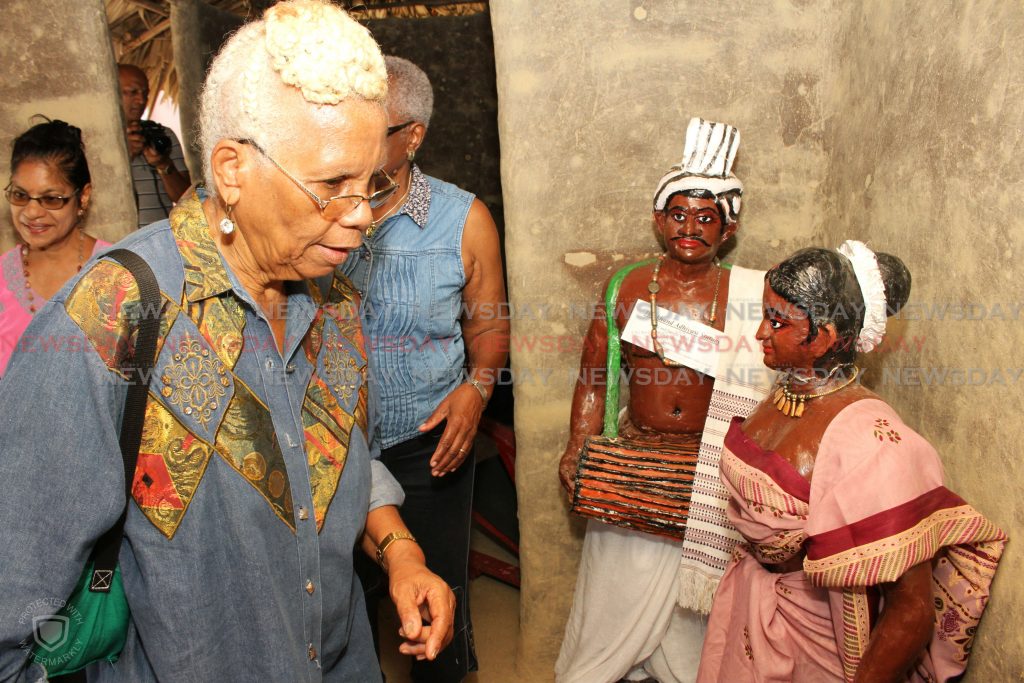
It would be unfortunate not to mention the visible threats that rising sea levels pose to the temple and other communities along the low-lying coastal area. In reflecting, it is sad to think that rising sea levels can quickly undo Sadhu’s efforts which took decades to construct.
Not too far away at the Waterloo Cremation Site there were funeral rites being performed. While some members of the tour took a moment to witness the proceedings, I had opted out. A few months before I witnessed similar rites at the site for the family member of a close friend and I found the proceedings to be overwhelming emotionally.
It was not before long that we returned to the tour bus and set off for our final tour stop, the Divali Nagar. As we drove out of Carapichaima and back to the highway, the quiet buzz of the community was soon replaced with the buzz of the highway. This did not last for too long as we were at the Divali Nagar in a few minutes.
The nine-day Divali Nagar festivities are a staple to local Divali celebrations. Visitors are treated to a wide range of shopping and eats. Craving the dreaded pepper roti, I searched for the delicacy and was soon eating away. My ambition was blinding and I soon realised I might have taken on more than I could have handled. I admit it took me well beyond the time of my stay at the Nagar to finish the delicacy. As I explored the site and got ready to wrap up the tour, I could not have left without getting my hands on some delicious barfi.
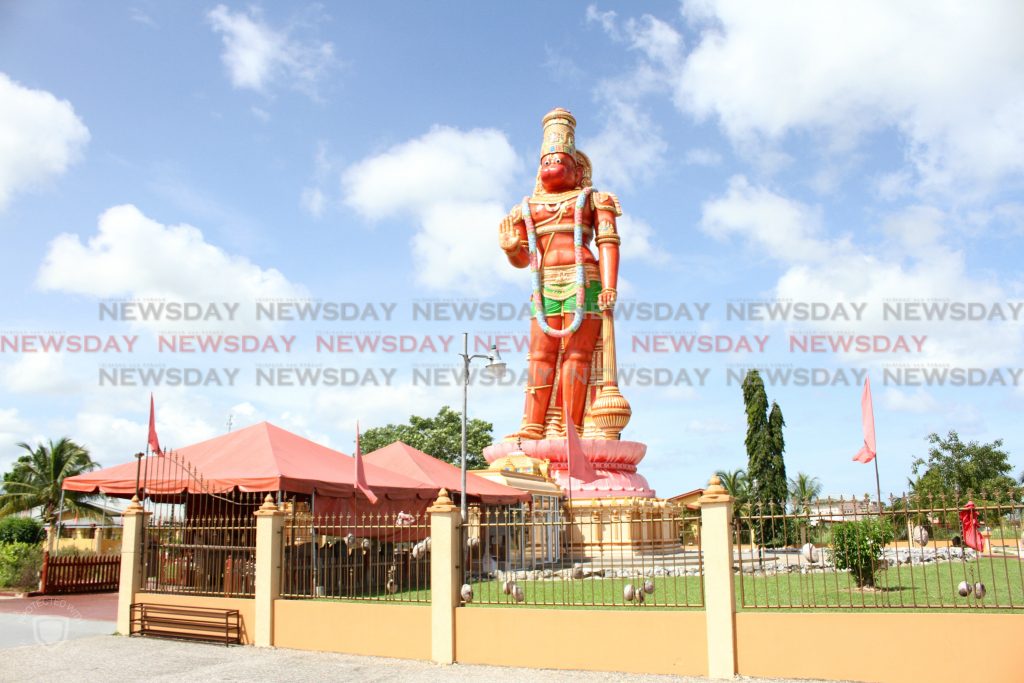
It was soon time to end my fulfilling day with the National Trust. There was so much to think about. While many places offered a view into our nation’s past, it also provided many moments of reflection about the future. I pondered about the creativity of the nation’s children that were on display in the museum, it took going to a place that offered a peek into the past to get a look into the future. I also thought about the issue of rising sea levels that will one day affect sites like the Temple in the Sea. It was a gentle reminder that if we don’t act to shape our future, we may very well allow the efforts of those in the past to be chipped away.
NATIONAL TRUST TOURS PARAMIN
The National Trust will host SCENIC PARAMIN TOURS on November 15 and 16. The tour assembles at the National Trust office on Sackville Street in Port of Spain at 8.45 am and departs 15 minutes later. Sites to be visited include: Lady of Guadalupe RC Church, Saut D’eau Beach lookout, Lookout overlooking Port of Spain, The Coliseum Cave, and the Paradise Villa. Dirt oven products & seasoning plants will be on sale. The tour costs $325 for members and $300 for non-members. Interested parties can contact the National Trust at 225-4750 or check www.nationaltrust.tt.


Comments
"Feeling the pulse of the heartland"